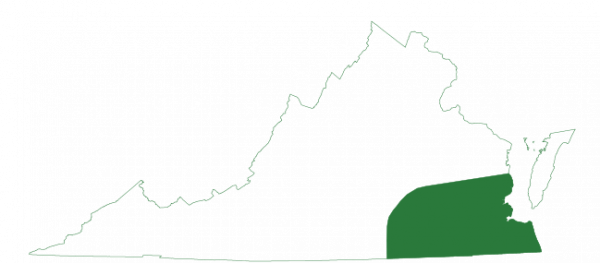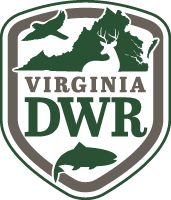Fact File
Scientific Name: Hyla gratiosa
Classification: Amphibian
Conservation Status:
- Species of Greatest Conservation Need-Tier 2a on the Virginia Wildlife Action Plan
Size: Up to 2.75 inches
Identifying Characteristics
The largest of Virginia’s treefrogs. This medium sized frog can be found in either a green phase or a less often gray phase. The skin is granular, and the back is typically evenly covered with dark, elliptical or round spots encircled with black. In some color phases, spots may be absent. A light stripe extends along the sides, bordered below by a purplish brown stripe.
Distribution:
In Virginia, this species occurs only in the eastern half of the state with most populations found in the Coastal Plain and a few in the southeastern Piedmont. It typically inhabits wooded areas with pine, or mixed pine-hardwood forests.

Did You Know?
Unlike many other species of frog, male Barking Treefrogs call while floating in the water. This species breeds from March-August in cypress ponds and swamps, and ephemeral habitats such as, interdunal swales, sinkholes, borrow pits, roadside ditches, and depressional wetlands. Their advertisement call doonk has been described as sounding like a hound dog barking in the distance.
Conservation
Tier II Species of Greatest Conservation Need in Virginia’s Wildlife Action Plan.
Last updated: January 19, 2024
The Virginia Department of Wildlife Resources Species Profile Database serves as a repository of information for Virginia’s fish and wildlife species. The database is managed and curated by the Wildlife Information and Environmental Services (WIES) program. Species profile data, distribution information, and photography is generated by the Virginia Department of Wildlife Resources, State and Federal agencies, Collection Permittees, and other trusted partners. This product is not suitable for legal, engineering, or surveying use. The Virginia Department of Wildlife Resources does not accept responsibility for any missing data, inaccuracies, or other errors which may exist. In accordance with the terms of service for this product, you agree to this disclaimer.

